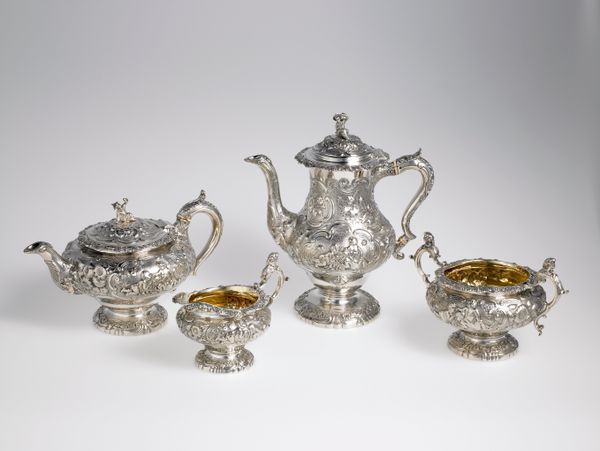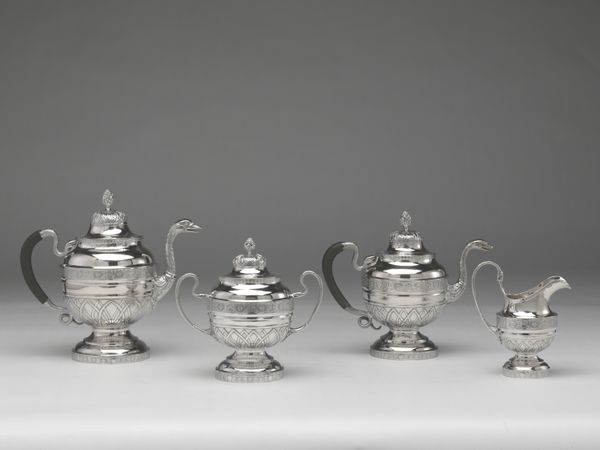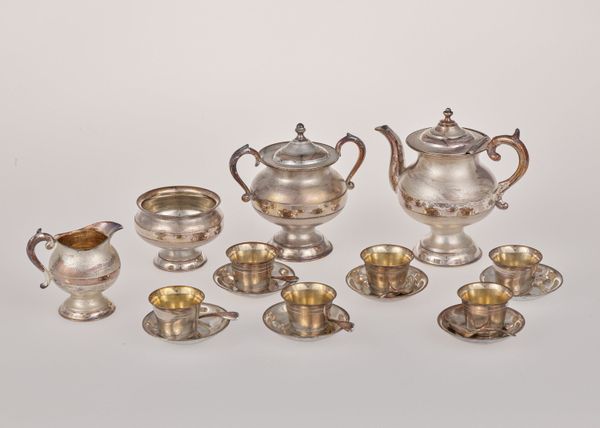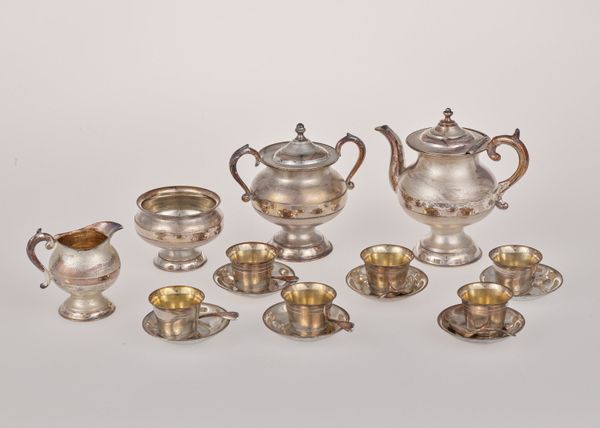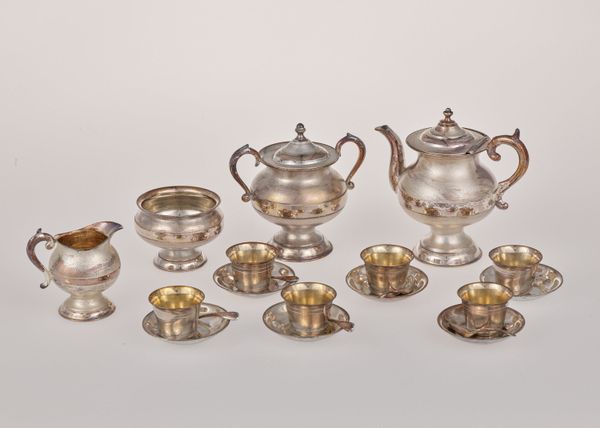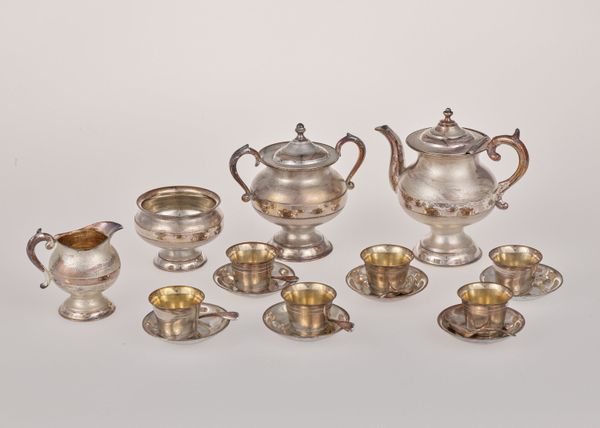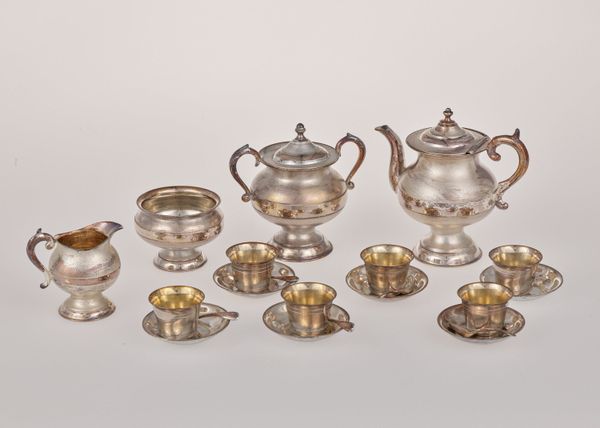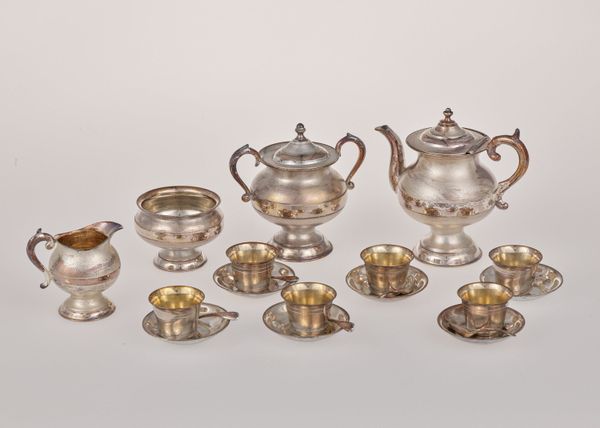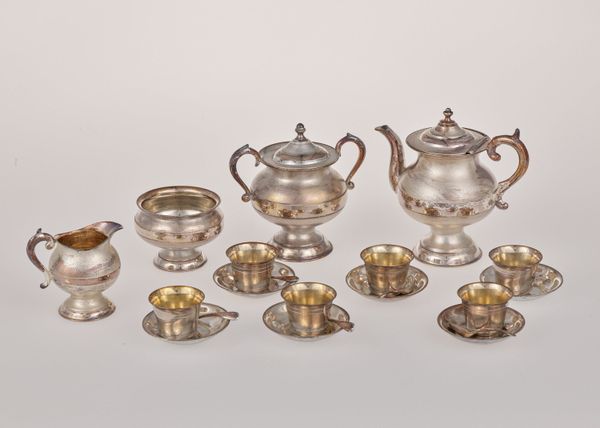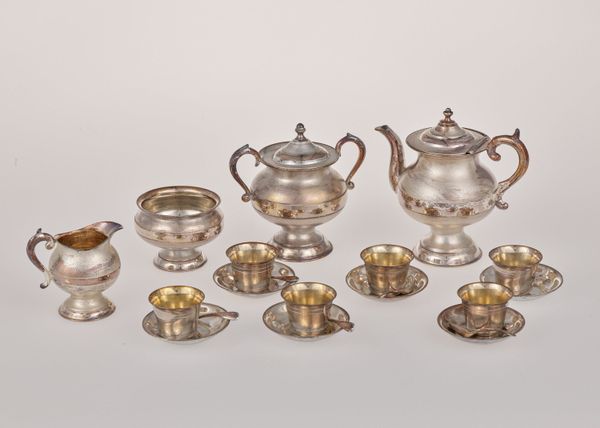
silver, metal, photography
#
silver
#
metal
#
photography
#
stoneware
#
england
#
decorative-art
Dimensions: 4 x 8 x 5 1/2 in. (10.16 x 20.32 x 13.97 cm) (a, teapot)2 x 5 3/4 x 4 7/8 in. (5.08 x 14.61 x 12.38 cm) (b, teapot lid)5 x 1 x 2 5/8 in. (12.7 x 2.54 x 6.67 cm) (c, teapot handle)2 1/2 x 5 1/2 x 4 5/8 in. (6.35 x 13.97 x 11.75 cm) (d, bowl)2 x 4 13/16 x 4 1/8 in. (5.08 x 12.22 x 10.48 cm) (e, creamer)2 1/2 x 5/8 x 1 9/16 in. (6.35 x 1.59 x 3.97 cm) (f, creamer handle)
Copyright: Public Domain
Editor: This beautiful traveling tea set, made of silver around 1825, is just gleaming. It makes me wonder, who would have traveled with this? It seems like such a luxury! What’s your take on it? Curator: This set exemplifies how even daily rituals become intertwined with social status and materiality. Think about the labor involved – the silversmith's craft, the mining of the silver itself. It wasn't just about drinking tea; it reflected England's economic reach and access to raw materials. The craftsmanship elevates it, but it also makes me think about who *didn't* have access to such refined goods. Editor: So, the value lies beyond the tea itself? You are mentioning resources, status, and labour… Curator: Exactly! It becomes a tangible representation of power dynamics and global trade networks. Silver wasn't simply plucked from the earth. It required extraction, refinement, and skilled hands to shape it. This set allows us to trace the commodity chain from mine to table, exposing a world of labor. Do you see how the seemingly innocuous act of drinking tea connects to vast systems of production and consumption? Editor: Absolutely. It is no longer a simple pretty silver set… it becomes a lens through which to see that complex period. So, knowing this tea set traveled, it shows also a need of some aristocrats to consume even outside their mansions, emphasizing even further a status? Curator: Precisely. And consider how that desire fueled the very systems of production we’ve discussed. The demand creates supply, driving resource extraction and skilled manufacturing. Editor: Well, I definitely see this tea set differently now. It's not just about aesthetics; it’s about the history of labor and materials. Thanks so much for your insights!
Comments
No comments
Be the first to comment and join the conversation on the ultimate creative platform.



